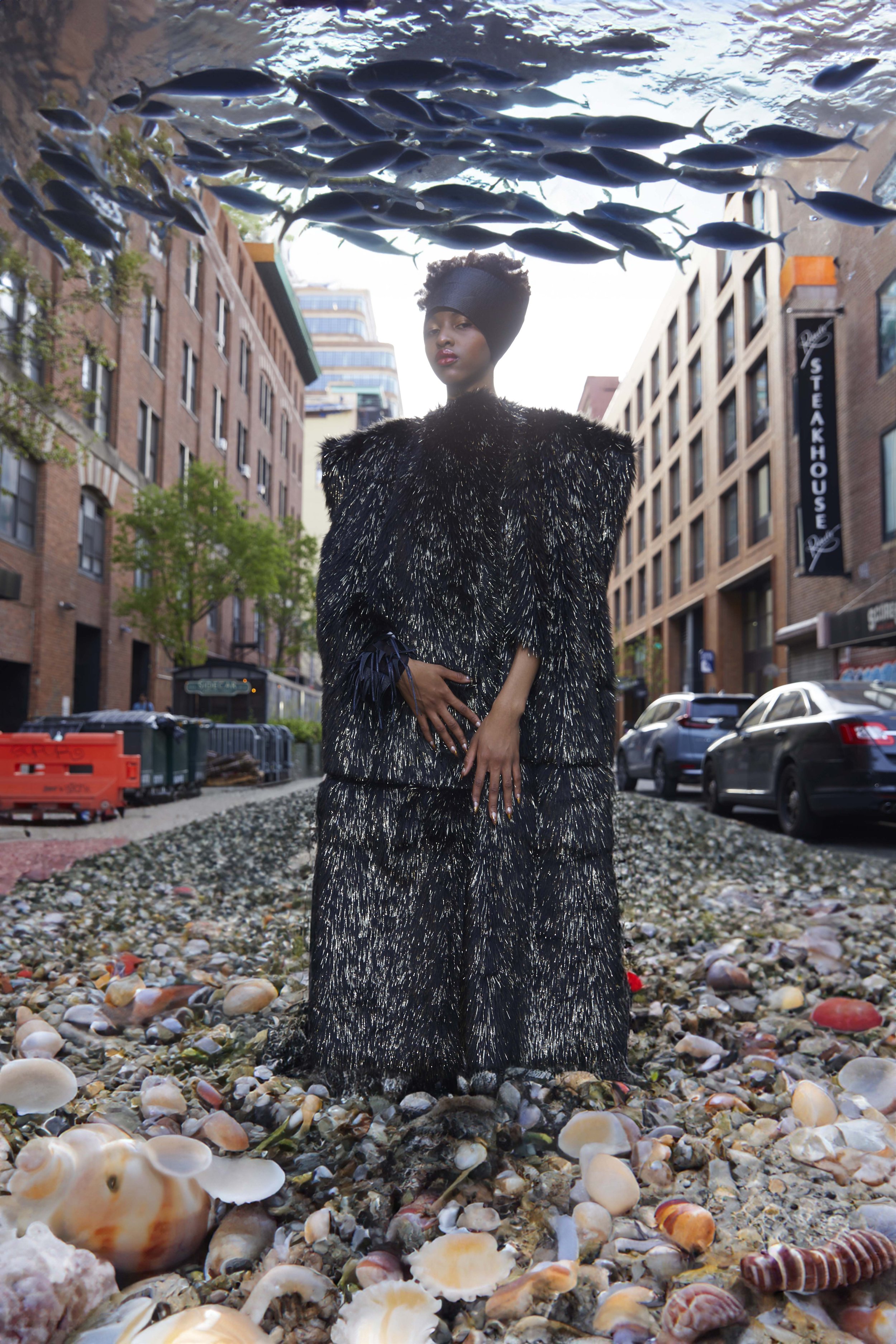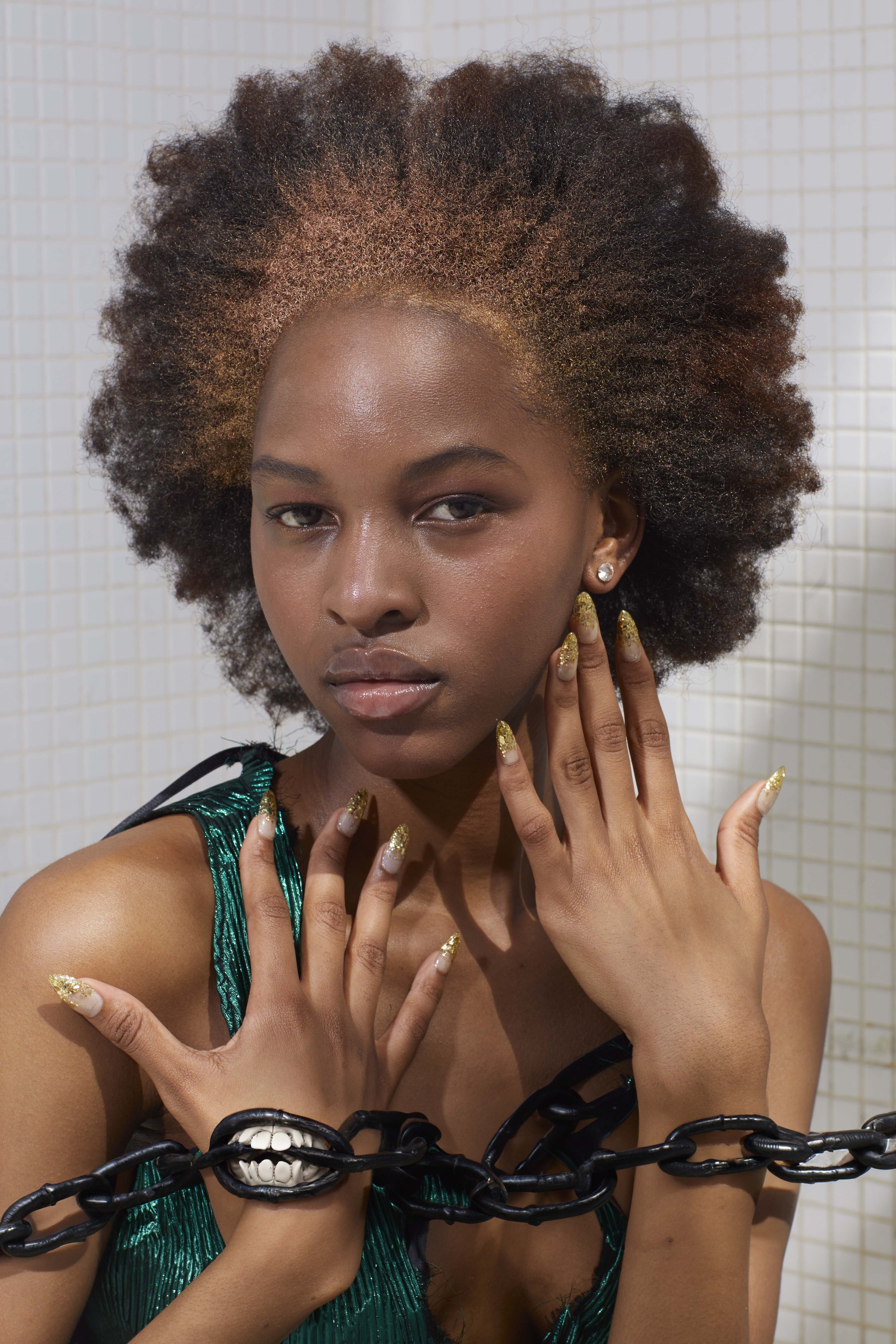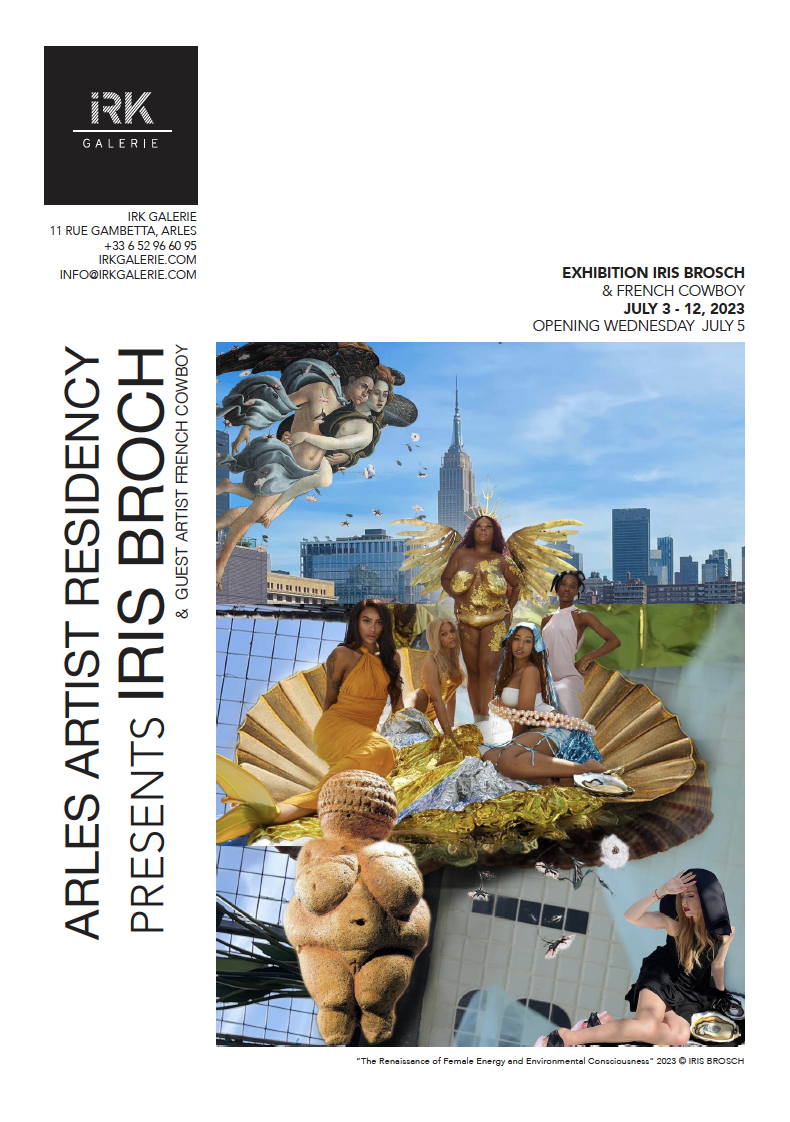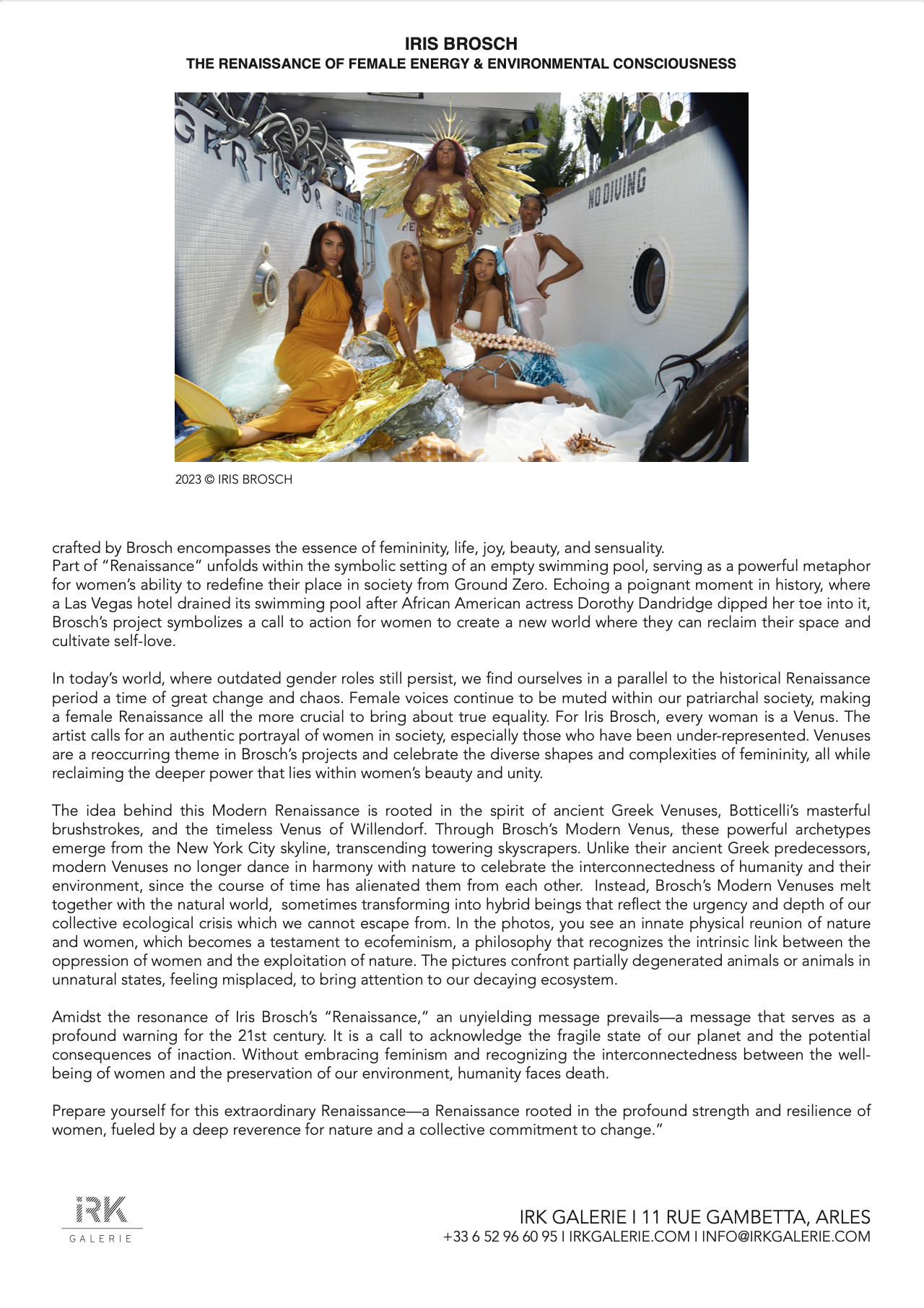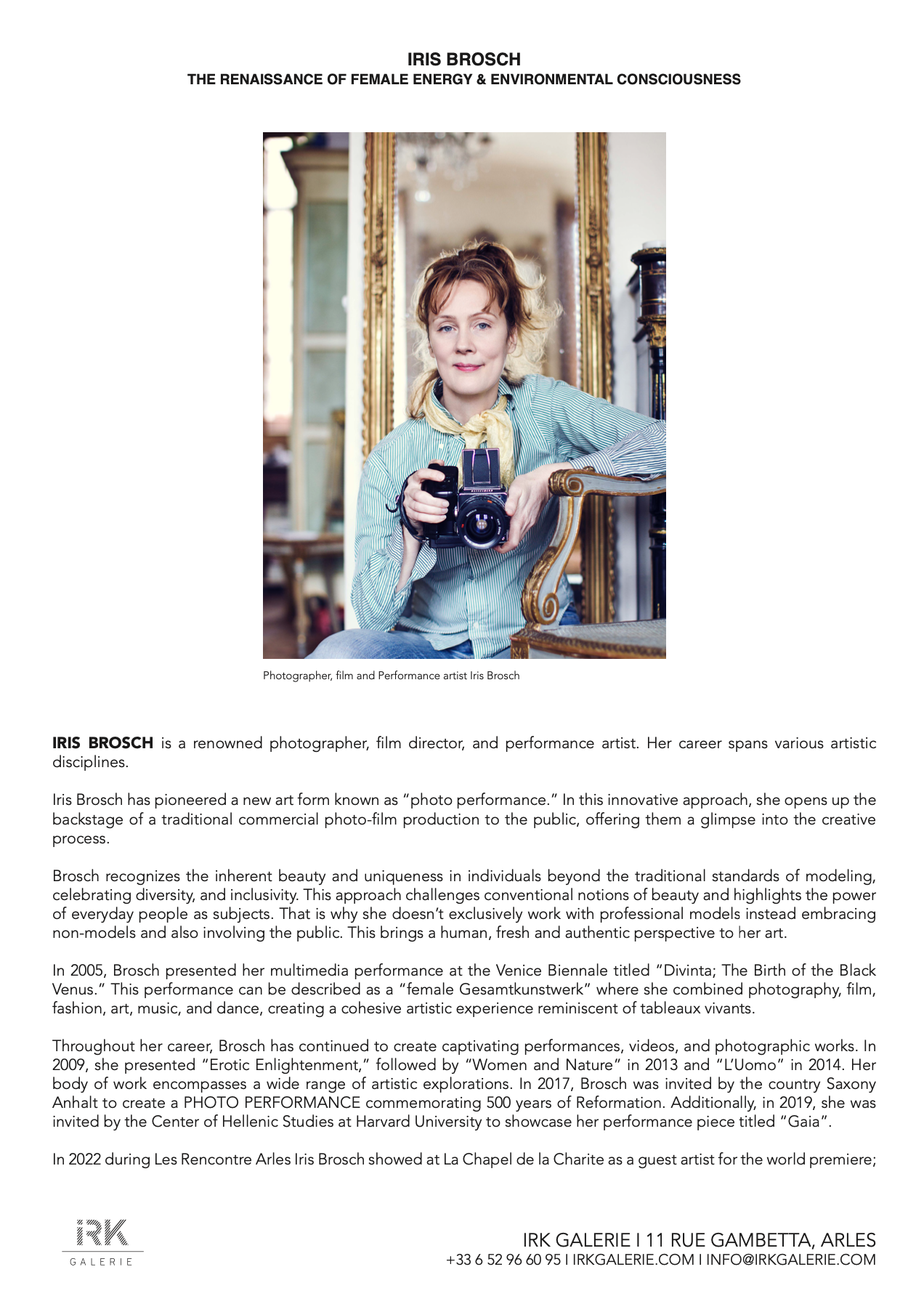the Renaissance of female energy is NOW
〰️
the Renaissance of female energy is NOW 〰️
Artist Iris Brosch’s project “Renaissance” was produced in New York during NFT Week, on the rooftop at the Selina Hotel. The mixed media event was curated by Allessia Moccia and featured Iris Brosch’s new art form, called Photo Performance. For this performance, Iris gave life to a Renaissance tableau to celebrate the unique strengths and talents that unite women across the world.
ECOFEMINISM
The project describes the relationship between feminism and ecology, the mystical connection between woman and nature, also called Eco Feminism. Woman and nature have a shared history of oppression by a patriarchal western society. Both are used and abused and close to extinction in a male system.
The historical Renaissance period started around 6 centuries ago and changed culture and art as we knew it. Paintings showed naked bodies that were admired for their beauty, which completely contrasted church morality and norms at the time. With her project Iris Brosch created a flowing, fluid performance giving birth to a feminist representation of Venus. The naked body and spirit of Venus get admired in Botticelli’s “the Birth of Venus”. A similar adoration is reserved for the Venus of Willendorf, a voluptuous female statue from prehistoric times. The Renaissance project shows model Asia Monet as a modern Venus of Willendorf. With her beautiful voluptuous full figure she incorporates femininity, life, joy, beauty and sensuality.
The Renaissance project was partially realized in an empty swimming pool to show that us women can start our redefinition in society from nothing, from Ground Zero. 70 years ago a hotel in Las Vegas drained their swimming pool because the breathtakingly beautiful, African American actress Dorothy Dandridge dipped her toe into their pool. This is a call for women to start creating a new world where women are allowed to take space and be filled with selflove.
The Renaissance project is also a celebration of life and the female energy that produces it. The performance shows the beauty of the female cycle and celebrates the strength of women. To generate life, the water Matrix of the womb requires virile warmth of fire. To sustain life, water and fire must be balanced. Excess of either one is destructive and unproductive.
The Renaissance period was also a time of great change and chaos. We are living in a similar time now: A time where we can still observe the impact of outdated gender roles. Our patriarchal society mutes female voices, and we need a female Renaissance to make those voices be heard.
In our times women should not be subordinated to male ideas any longer. Listen to the voices of strong powerful female figures who embrace their femininity.
Iris Brosch created a Venus who fully embraces womanhood - a real image of women, especially the ones that have been underrepresented in society. Fertility, sensuality, femininity and beauty come in different shapes and complexities, all rooting in the same female connection. Renaissance celebrates with dance, happiness, and joy to rebirth the image of women, women who are celebrating their figures and sensuality. Us women are so much more than a mere decoration, our beauty holds a deeper power within.
It’s time for another Renaissance, a Renaissance of female values, a Renaissance of women to make space for the female gaze. Us women should freely embrace our femininity and be proud of our power of reproduction. It’s time to embrace the unique strengths and talents of women and to celebrate female power.
Prepare for a new Renaissance, the Renaissance of women, by women, for women.
The ‘Tableaux vivantes’ in which the photographs by Iris Brosch are framed inevitably exhale the flavour of old paintings into which our cultural history is so safely engraved. But looking closer, we have to admit that, even in the current media-jungle, we find ourselves surrounded by living tableaux emerging on all possible platforms.
These ‘tableaux vivants’ are for Iris Brosch the “hot zone” of contemporary communication. With her living tableaux and performances in the installation „Women and nature near extinction“ Iris Brosch successfully brings back to life fey ciphers and constellations of history and society that, for ages, were frozen. The works are courageously indebted to a realm of nostalgic melancholy and to a beauty that roams the centuries in search of itself.
In her photographs - where women are depicted as saints, madonnas or tragic heroines - the beauty of ideal female virtue is fortified by the immediate natural beauty of her models, whose personality and charm are capable of not only reviving their mythological origins but also to engender new interpretations.
The works are no light fare, they are controversial and invite the spectator to actively take a position, to think and reason further, not-withstanding feminism, violence, war and morality.
The deliberately provocative depictions of sexuality are part of the plan to unmask a system of values that are perceived as hypocritical and wrong and to replace them with a sober and poetic feminism. „Women and nature near extinction“ is an art-project which places the female body and nature into focus and tells us in a singular way of longing and anger, aggression and tolerance, but also of perception and repression. The viewer enters a journey into the unknown.
This journey demonstrates that in our 21st Century a critical perception of nature and art cannot easily be distinguished. Brosch’s video- and photographic works create an alliance of art and ecology; the latter being widely regarded as the most significant science of our time. By means of specific lines of sight Brosch’s artistic work epitomizes the unity of femininity and nature and identifies that our relation to nature has turned troublesome. In the post-romantic age sometimes both nature and femininity appear as severely threatened and through ecofeminist art our eyes are opened and minds challenged to reconsider and reprove.
invitation
INVITATION CARD for the Screening of RENAISSANCE










